Everything About Robotic Knee Replacement
A robotic knee replacement is similar to a standard knee replacement in that it replaces the knee joint. Damaged tissue in your knee is removed and replaced with an artificial joint by your surgeon. The only difference is that it’s made with the help of a robotic arm.
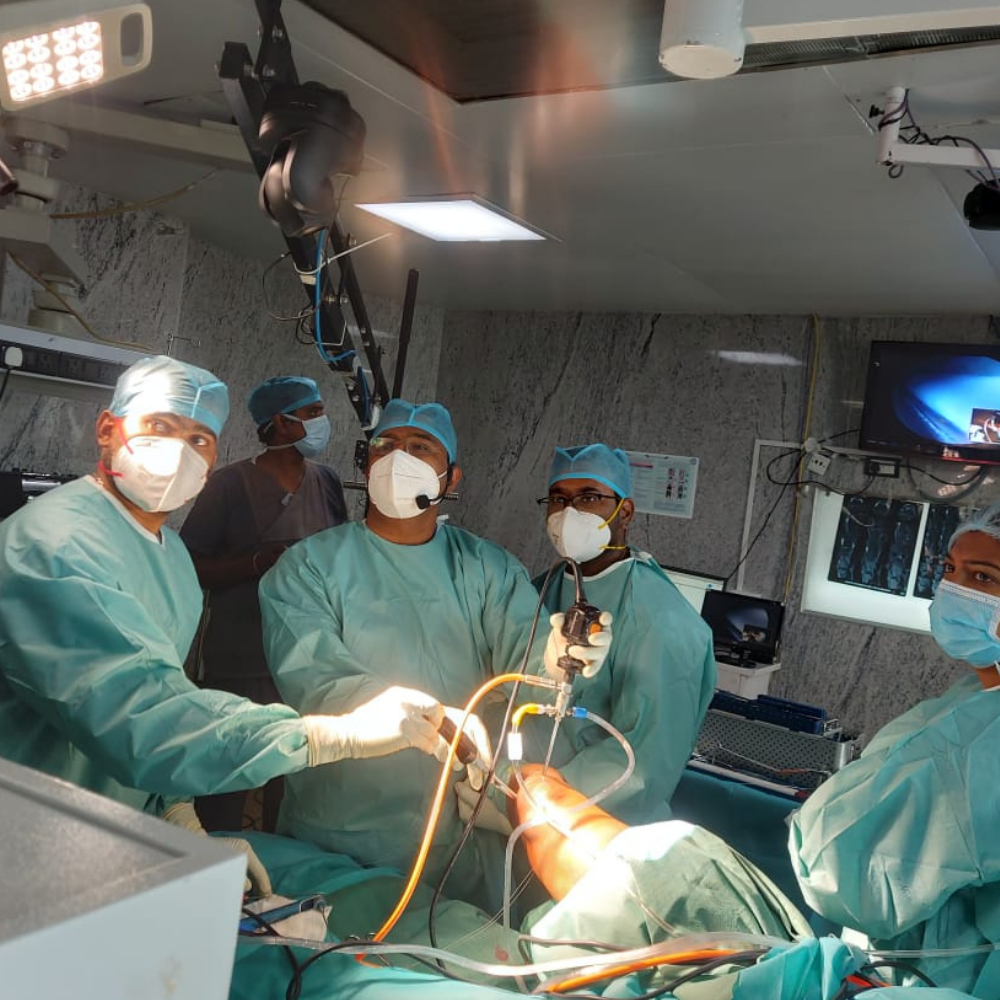
Everything About Robotic Total Knee Replacement and its Treatment
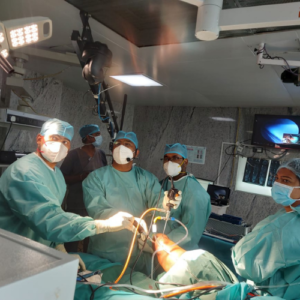
A robotic knee replacement is similar to a standard knee replacement in that it replaces the knee joint. Damaged tissue in your knee is removed and replaced with an artificial joint by your surgeon. The only difference is that it's made with the help of a robotic arm.
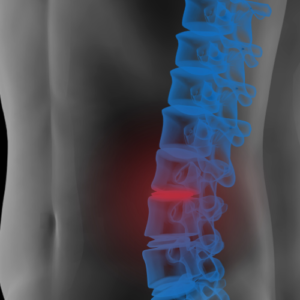
What is Endoscopic Lumbar Discectomy ?
A herniated disc in the lower back that presses a nerve which causes severe leg pain, numbness, or weakness. To surgically relieve these symptoms the disc is removed. This procedure is called a discectomy.
What is Endoscopic Lumbar Discectomy ?
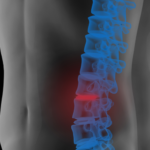
A herniated disc in the lower back that presses a nerve which causes severe leg pain, numbness, or weakness. To surgically relieve these symptoms the disc is removed. This procedure is called a discectomy.
Recovery Rate
The recovery period for those who work in offices or other sedentary occupations often lasts one to two weeks. Recovery may take four to six weeks for those who are more physically active, such as sports and those who move around more frequently during their typical workday.

Recovery Rate

The recovery period for those who work in offices or other sedentary occupations often lasts one to two weeks. Recovery may take four to six weeks for those who are more physically active, such as sports and those who move around more frequently during their typical workday.
Causes
- Spinal and foraminal stenosis.
- Bulging disc.
- Failed back surgery syndrome.
- Degenerative disc disease.
- Sciatica pain.
- Spondylolisthesis.
- Radicular pain.
- Bone spurs.
Causes
- Spinal and foraminal stenosis.
- Bulging disc.
- Failed back surgery syndrome.
- Degenerative disc disease.
- Sciatica pain.
- Spondylolisthesis.
- Radicular pain.
- Bone spurs.
Diagnosis
Test
Self diagnosis
Diagnosis by doctor
For the surgery
Test
Before a hysterectomy, the following tests are frequently advised:
Imaging tests: These could include of one or more of the following:
Xray
Ultrasound
MRI
PET Scan
Imaging tests are those medical procedures that use high-frequency sound waves to create an image of your inside organs, tissues, and blood flow. They can assist in validating any anomalies in or near your uterus. The initial step to support the confirmation of any uterine abnormalities is typically a straightforward pelvic ultrasound. However, in some less common situations, other imaging tests such an MRI, CT scan, or sonography may also need to be taken into account.
Self diagnosis
Only doctors should diagnose uterine health issues; self-diagnosis must be strictly avoided.
Diagnosis by doctor
While your specific symptoms can help your doctor diagnose some gynecological illnesses, other diagnostics are required for a more precise diagnosis. Your doctor advises the best course of therapy, either conservative or surgical, based on the total of both.
For the surgery
• The patient is positioned face-down, and the surgeon makes a small incision over the location of the herniated disc.
• The surgeon inserts the retractor and removes a small amount of the lamina bone. This provides the surgeon with a view of the spinal nerve and the disc.
• The surgeon carefully retracts the nerve and removes only the damaged disc.
This minimally invasive technique can also be used for herniated discs in the neck. The procedure is done through the back of the neck and is called an Endoscopic posterior cervical foraminotomy/discectomy.
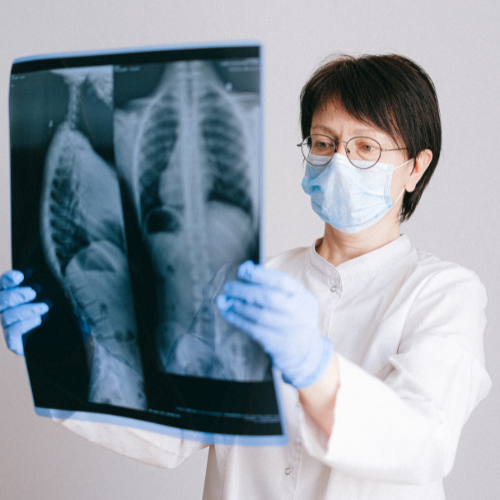
Diagnosis
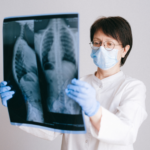
Test
Self diagnosis
Diagnosis by doctor
For the surgery
Test
Before a hysterectomy, the following tests are frequently advised:
Imaging tests: These could include of one or more of the following:
Xray
Ultrasound
MRI
PET Scan
Imaging tests are those medical procedures that use high-frequency sound waves to create an image of your inside organs, tissues, and blood flow. They can assist in validating any anomalies in or near your uterus. The initial step to support the confirmation of any uterine abnormalities is typically a straightforward pelvic ultrasound. However, in some less common situations, other imaging tests such an MRI, CT scan, or sonography may also need to be taken into account.
Self diagnosis
Only doctors should diagnose uterine health issues; self-diagnosis must be strictly avoided.
Diagnosis by doctor
While your specific symptoms can help your doctor diagnose some gynecological illnesses, other diagnostics are required for a more precise diagnosis. Your doctor advises the best course of therapy, either conservative or surgical, based on the total of both.
For the surgery
• The patient is positioned face-down, and the surgeon makes a small incision over the location of the herniated disc.
• The surgeon inserts the retractor and removes a small amount of the lamina bone. This provides the surgeon with a view of the spinal nerve and the disc.
• The surgeon carefully retracts the nerve and removes only the damaged disc.
This minimally invasive technique can also be used for herniated discs in the neck. The procedure is done through the back of the neck and is called an Endoscopic posterior cervical foraminotomy/discectomy.
Risks & Complications
Risk and Complications
Risk and Complications
There could be risks involved with MISS, just like there are with any operation. MISS has less problems than open spinal fusion surgery, according to some research, however they are comparable. Your surgeon will go over all of the risks with you before the procedure and will take particular precautions to help prevent any potential issues. The following issues could arise from MISS:
• Illness. To reduce the risk of infections, antibiotics are frequently administered to the patient prior to, during, and often after surgery.
• Bleeding. Although there may likely be some bleeding, it won’t usually be much.
• A graft site that stings. At the site of the bone graft, a small minority of patients will have ongoing pain.
• Constant symptoms Some patients could relapse with their initial symptoms.
• Pseudoarthrosis – This condition prevents a spinal fusion from fully healing because not enough bone is formed. If this happens, more surgery might be required to achieve a strong fusion. Smokers are more likely to experience pseudarthrosis.
Advantages of Minimally Invasive Spine Surgery
• Smaller incision than traditional spine surgery
• less post operative pain
• Less invasive hence less soft tissue and ligament damage intra-operatively
• Can go home the same day or the next day
• Can walk from the next day itself.
• Faster recovery than open spine surgeries
Risks & Complications
Risks & Complications
Risks & Complications
- As with any operation, there are potential risks associated with MISS. The complications of MISS are similar to those of open spinal fusion surgeries; however, some studies show a reduced complications for MISS. Before your surgery, your doctor will discuss each of the risks with you and will take specific measures to help avoid potential complications. The potential complications of MISS include:
• Infection. Antibiotics are given to the patient before, during, and often after surgery to lessen the risk of infections.
• Bleeding. A certain amount of bleeding is expected, but this is not typically significant.
• Pain at graft site. A small percentage of patients will experience persistent pain at the bone graft site.
• Recurring symptoms. Some patients may experience a recurrence of their original symptoms.
• Pseudoarthrosis -This is a condition in which there is not enough bone formation and a spinal fusion does not completely heal. If this occurs, a second surgery may be needed in order to obtain a solid fusion. Patients who smoke are more likely to develop a pseudarthrosis
Advantages of Minimally Invasive Spine Surgery
• Smaller incision than traditional spine surgery
• less post-operative pain
• Less invasive hence less soft tissue and ligament damage intra-operatively
• Can go home the same day or the next day
• Can walk from the next day itself.
• Faster recovery than open spine surgeries
When to consult a doctor ?
In the following three conditions, you should consider immediate medical help:
About symptoms: One of your legs may experience tingling, pain, or weakness as a result of the condition.
Our endoscopic discectomy Specialist

***
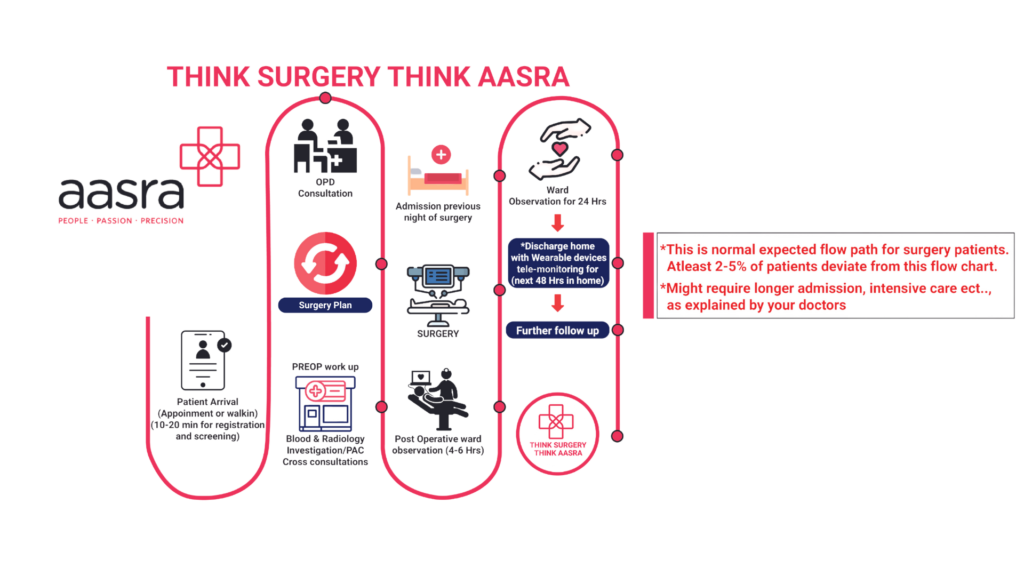
When to consult a doctor ?
In the following three conditions, you should consider immediate medical help:
About symptoms: One of your legs may experience tingling, pain, or weakness as a result of the condition.
Our Specialist

***
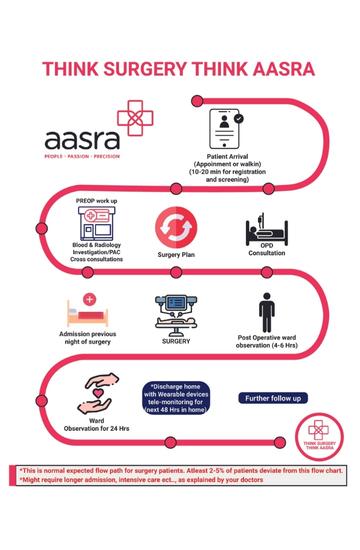

Insurance coverage
Insurance does cover the cost of the surgical procedure for a hysterectomy performed due to adenomyosis because it is on the list of procedures that are "medically required." The cost capping, however, may change from instance to case. Please get your healthcare or insurance company to validate this.
Insurance coverage

Insurance does cover the cost of the surgical procedure for a hysterectomy performed due to adenomyosis because it is on the list of procedures that are "medically required." The cost capping, however, may change from instance to case. Please get your healthcare or insurance company to validate this.
Frequently Asked Questions
Frequently Asked Questions
Facts and figures around robotic hip replacement
Why choose Aasra for robotic knee replacement treatment?
AASRA Hospital has the state of the art technology for performing joint replacement surgeries i,e MAKO Robitic joint replacement technology.
There is less post operative pain, reduced hospital stay ,patient can walk early and early recovery .
How to book appointment for aasra
Booking an appointment with a Aasra Orthopedician is easy.
Simply give us a call directly or complete our online appointment booking form. The only four questions it would ask you are “Your name,” “Contact,” and “tell us a little more about yourself.” Simply complete the form and press “submit.” One of our medical coordinators will give you a call soon to assist you in speaking with the doctor of your choice.
Facts and figures around robotic hip replacement
Why choose Aasra for robotic hip replacement treatment?
AASRA Hospital has the state of the art technology for performing joint replacement surgeries i,e MAKO Robitic joint replacement technology.
There is less post operative pain, reduced hospital stay ,patient can walk early and early recovery .
How to book an appointment for aasra?
Booking an appointment with a Aasra Orthopedician is easy.
Simply give us a call directly or complete our online appointment booking form. The only four questions it would ask you are “Your name,” “Contact,” and “tell us a little more about yourself.” Simply complete the form and press “submit.” One of our medical coordinators will give you a call soon to assist you in speaking with the doctor of your choice.
